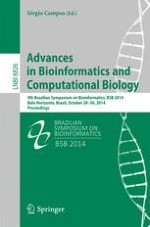2014 | Book
Advances in Bioinformatics and Computational Biology
9th Brazilian Symposium on Bioinformatics, BSB 2014, Belo Horizonte, Brazil, October 28-30, 2014, Proceedings
Editor: Sérgio Campos
Publisher: Springer International Publishing
Book Series : Lecture Notes in Computer Science
